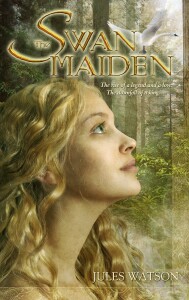The Irish legend of Deirdre would seem to be ideal material for grand opera, full of romance, passion, high honor and deadly betrayal. Burdened at birth with a druid’s prediction that she will be extraordinarily beautiful but bring bloody doom to the warriors of the Ulaid tribe, Deirdre is sent away and raised in obscurity by Conor, king of the Ulaid. Thus he hopes to keep her beauty to himself and cheat the prophecy. Of course, this misguided plan only serves to bring about the final tragedy. Deirdre elopes with a handsome young hunter, Naisi, and flees to Scotland, but the king’s lust pursues them over sea and land, and leads to a bloody rift in the unity of the clan, as well as the deaths of the faithful lovers.
Though an opera actually does exist, composed by Canadian Healey Willan in 1945, as well as early-twentieth-century plays by Yeats, Russell, and Synge, I don’t know of any full-length historical novel about Deirdre written before The Swan Maiden. What can a novel bring to this tale that almost demands a dramatic treatment? Jules Watson has kept faithfully to the grand, tragic outline of the story, while seeking to fill in many details of the characters’ lives, both outer and inner, as only a novelist can.
Her dense, slowly-developing narrative builds up a strong picture of a legendary time and place, as well as giving psychological insight into the characters’ motives and inner transformations. Where the original tale takes traditional shortcuts – Deirdre and Naisi’s instant attraction to one another, for instance – Watson develops incidents and relationships over time, weaving a complex web of clan and family loyalties while also showing the struggle of the individual soul to break free and forge something new. Her picture of Iron Age Ireland (a few centuries BC) is based on scanty archaeological evidence, but is convincing and rich in detail.
Depending on your inclinations, The Swan Maiden may enthrall you with its extremely detailed, precise descriptions, or make you impatient to get to the action. It took me a while to get used to the pace and style of Watson’s storytelling and be drawn into the characters’ lives, but I became more and more absorbed into their world as I went along. I appreciated the chance to really get into the hearts and minds of characters who otherwise might be seen as just figures moved by the hand of destiny. I was especially impressed by the portrait of the Red Branch warriors and their mystical bond, which brought another dimension to the usual heroic sword-and-dagger doings.
The Irish source material is truly one of the great stories of the world and deserves to be better known; I’m glad that it has been given this thoughtful, well-written treatment. There’s more to come, too: The Raven Queen will tell the story of Ulaid’s rival ruler Maeve of Connacht. I look forward to another visit to Deirdre’s Ireland.
(Bantam Spectra, 2009)

